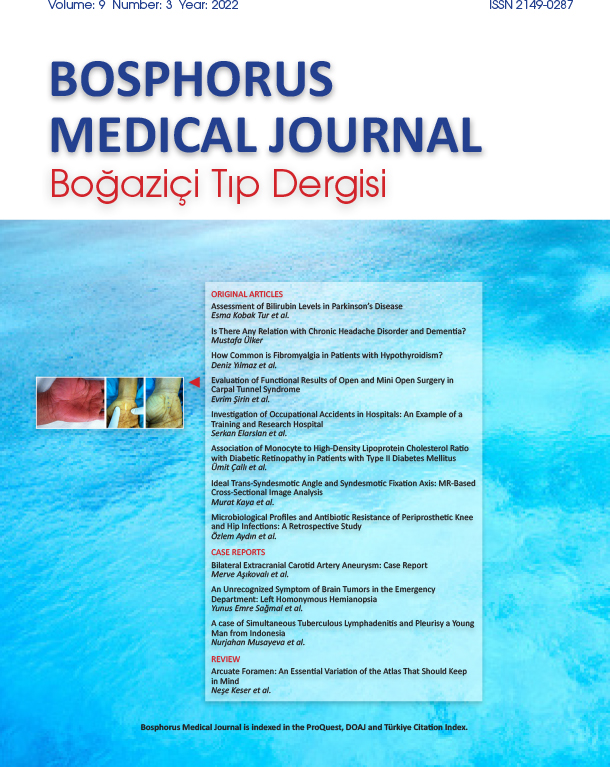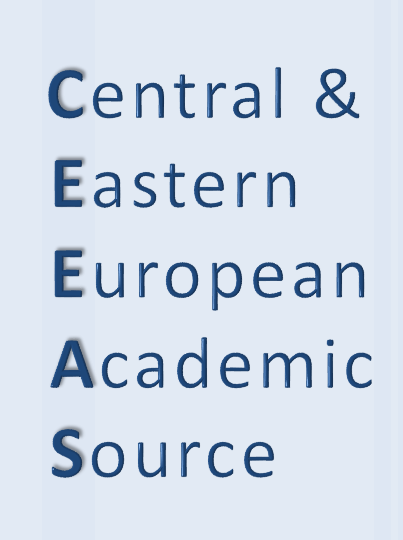Korpus Kallozumun Sitotoksik Lezyonları: Dört Vaka Sunumu
Gülseren Büyükşerbetçi, Ümmü Serpil Sarı, Nermin Tepe, Merve Karabaş, Figen EsmeliBalıkesir Üniversitesi Tıp Fakültesi, Nöroloji Anabilim Dalı, Balıkesir, TürkiyeKorpus kallozum, her iki serebral hemisfer arasında interhemisferik iletişimi sağlayan, beyaz cevher traktlarının oluşturduğu birincil komissüral alandır. Korpus kallozum, yaklaşık 200 milyon ağır miyelinli aksondan oluşur ve kontralateral nöronlara homotopik veya heterotopik projeksiyonlar oluşturur. Anatomik olarak, korpus kallozum dört ayrı bölüme ayrılır: rostrum, genu, body ve splenium. Bu bileşenler, sağ ve sol serebral hemisferlerin karşılık gelen merkezlerini bağlar ve kapsamlı nöral koordinasyonu sağlar.
Korpus kallozumun sitotoksik lezyonları (KKSL), çeşitli nörolojik semptomlarla kendini gösterebilir. Bu çalışmada dört KKSL vakası sunulmaktadır. İlk vaka, nöroloji polikliniğine ateş, bulanık görme ve yorgunluk şikayetleriyle başvuran 41 yaşında erkek hastaydı. İkinci olgu, 21 yaşında kadın hasta, acil servise baş ağrısı, ateş, tinnitus ve boğaz ağrısı ile başvurdu. Üçüncü vaka, 65 yaşındaki bir kadın hastaydı. Acil servise baş ağrısı, farkındalığın bozulduğu fokal nöbet ve konfüzyon ile başvurdu. Dördüncü vaka, 64 yaşında kadın hastaydı; global afazi ve sağ hemiparezi ile başvurdu ve acil servisteki takibinde ateş ortaya çıktı.
Korpus kallozum splenium lezyonunun (KKSL) etiyolojisinde, ilk vakada diş temizleme işlemi sonrası gelişen enfeksiyon, ikinci vakada lobar pnömoni ve üçüncü vakada sinüs venöz trombozu tespit edildi. Ayrıca üçüncü vakada takip sırasında ateş ve farkındalığın bozulduğu nöbetler izlendi. Dördüncü vakada ise ampirik antibiyotik tedavisine yanıt veren, ancak kültür ve görüntüleme gibi enfeksiyon odağına yönelik tetkiklerde kaynağı tespit edilemeyen bakteriyel enfeksiyonun etiyolojide rol oynadığı düşünüldü. KKSL tanısı, difüzyon manyetik rezonans görüntüleme (MRI) kullanılarak korpus kallozumda akut difüzyon kısıtlamasının belirlenmesiyle konur. KKSL, tanı konulmamış nörolojik bulguları olan hastalarda ayırıcı tanıda göz önünde bulundurulmalıdır. Genellikle altta yatan nedene bağlı olarak geri dönüşümlüdür ve iyi prognozludur. Radyolojik olarak tanınması, uygun tedavi seçimi için önemlidir.
Cytotoxic Lesions of the Corpus Callosum (CLOCC): Four Case Reports
Gülseren Büyükşerbetçi, Ümmü Serpil Sarı, Nermin Tepe, Merve Karabaş, Figen EsmeliDepartment of Neurology, Balıkesir University Faculty of Medicine, Balıkesir, TürkiyeThe corpus callosum serves as the primary commissural region of the brain, comprising white matter tracts that facilitate interhemispheric communication between the left and right cerebral hemispheres. It consists of approximately 200 million heavily myelinated axons, which form homotopic or heterotopic projections to contralateral neurons within the same anatomical layer. The corpus callosum is conventionally divided into four distinct parts: the rostrum, genu, body, and splenium. These components connect corresponding centers in the right and left cerebral hemispheres, thereby enabling comprehensive neural coordination.
Cytotoxic lesions of the corpus callosum (CLOCC) represent unusual clinical conditions characterized by diverse presentations. This study presents four cases of CLOCC. The first case involved a 41-year-old male patient who presented with symptoms of fever, blurred vision, and fatigue. The second case concerned a 21-year-old female patient who presented with headache, fever, tinnitus, and sore throat. The third case involved a 65-year-old female patient who presented with headache, focal seizures with impaired awareness, and confusion. The fourth case involved a 64-year-old female who presented with global aphasia and right hemiparesis; she developed a fever during clinical follow-up.
Upon evaluating the etiology of CLOCC, an undetermined infection following a dental procedure was identified in the first case, lobar pneumonia in the second case, and sinus venous thrombosis in the third case. Additionally, the third case developed epileptic seizures during follow-up. In the fourth case, a bacterial infection of undetermined origin that resolved with empirical antibiotic therapy was considered the etiology. Diagnosis involves identifying acute diffusion restriction in the corpus callosum using diffusion MRI. CLOCC should be considered in the differen-tial diagnosis of patients presenting with undiagnosed neurological findings. These lesions are often reversible and have a favorable prognosis, depending on the underlying cause. Radiological identification is crucial for selecting appropriate treatment options.
Makale Dili: İngilizce




















